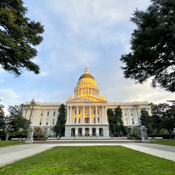
Tax Guide for Green Technology
As California continues to be the national leader in green technology, the California Department of Tax and Fee Administration (CDTFA) understands the need to inform businesses of the tax laws that come with this industry growth.
In this industry guide, you will find information on the following topics:
CDTFA is Going Green
In an effort to be green and reduce paper use, we are moving to electronic filing of returns and electronically providing information such as tax rate changes, newsletters, tax and fee updates, public meeting agendas, and announcements.
If we do not have your email address, you may not receive important information that could affect your business. To provide us your email address, simply log in to your account and update your information. If you are not registered with us, you can register with us for free.
If You Need Help
If at any time you need assistance with topics included in this guide—or with topics not included—feel free to contact us by telephone or email. For contact information and hours of operation, see our How to Contact Us webpage.
If you have suggestions for improving this guide, please contact us via email.
